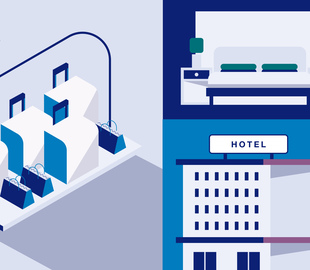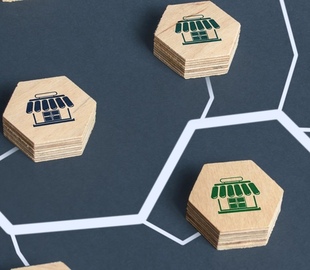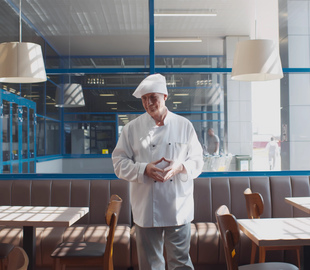
As cafes, bars and restaurants gear up for outdoor dining, making extra room (and shelter) for diners and drinkers should not be your only consideration. You also need to know your customers can order and settle-up outside. So another vital element to successfully move your indoor business outdoors is a modern payments system.
Of course, outdoor dining means the hottest accessories at many establishments are likely to be patio heaters, gazebos and blankets. But smart mobile-payments solutions can be invaluable in handling the logistical practicalities of getting orders to diners with minimal contact.
Dining outdoors – still on the table?
During lockdown periods, many hospitality businesses were forced to invest in outdoor dining to keep trading. The choice was to move outside or stick to offering takeaway or delivery services. However, as social-distancing requirements in one form or another look set to continue for the foreseeable future, small restaurants that can’t accommodate the required spacing – or can’t afford to invest in ventilation after an extended, tough trading period – can opt to continue offering outdoor dining.
“There are also human factors at play. Many people are wary of spending a number of hours in an enclosed, indoor space,” says David Wheatcroft, Head of European Hospitality at Elavon Europe. “Being outdoors has become a habit and businesses would be wise to cater to people who prefer to dine outside, where they feel safe.
“There’s still a novelty factor, too: if we look at the UK, where dining generally reopened earlier than in other European countries, the signs suggest that people still enjoyed being outside even after restaurants were allowed to serve indoors. The UK’s weather immediately after reopening was quite miserable, but people still flocked to outside tables.
“It’ll be interesting to see what happens as the seasons continue to pass,” he continues. “Will everyone eventually move back inside, or will there still be a demand to wrap up in a blanket? I think we’re maybe trained to gather outdoors now, as long as we’re warm and dry.”
With cities and towns rolling out plans for pedestrianised streets and wider footpaths to accommodate kerbside seating, it looks like outdoor drinking and dining will be with us for a while yet.
Technology tempts customers to spend
To bring in customers, restaurants need to ensure that outdoor dining is both attractive and comfortable. And getting diners over the threshold – or onto the footpath outside – is the priority again, according to David.
“Money is made from customers having a couple of courses, another round of drinks, another bottle of wine. It might be that restaurants provide meal kits and click-and-collect services as smaller revenue streams, but footfall is the focus again,” he says.
“Customers won’t sit in a beer garden in the rain, so there’s an obvious requirement to spend on covers, patio heaters, blankets and weatherproof seating,” says David. “But the right payments technology can make it convenient enough to help keep customers on your premises, ordering food and buying drinks.”
For outdoor dining, it’s vital that you can take payments anywhere on your premises and not just at the counter. Using cloud-based software, your payments solution can serve a lot more business needs than just transmitting debit- or credit-card data, potentially solving the logistical challenges of outdoor dining:
The practicality of managing orders and attending to outdoor customers, which often requires running inside, to the kitchen or behind a bar;
The viability of serving customers at table, kerbside or at the door – possibly all at the same time; and
The feasibility of managing incoming orders and payments online and in-house simultaneously.
“With so many changes to dining, be as clear as possible with customers – for example, if it’s in-app ordering, spell out whether they need to add card details before ordering,” David advises. “If it’s not via an app, state that they need to go to a particular paypoint or if they should pay via portable mobile devices. The more comfortable and clear you make it, the more readily your customers will embrace it.”
Contactless dining
Covid has forced restaurants to invest in technology to enable these new ways of working,” says David. “This has undoubtedly been a big outlay, especially for small businesses, but the reality is this tech is here to stay so it’s a worthwhile, long-term investment.”
Elavon has launched a talech contactless-dining feature as an enhancement to the existing point-of-sale feature set. Contactless dining allows for remote ordering from customers’ phones with ease. It offers functionality that reduces the number of physical touchpoints, without the need for physical menus and receipts – reducing the time your staff are required at tables.
Contactless dining also facilitates printable QR codes with specific table numbers, which diners can scan to bring them directly to the online site to order. It’s a quick, simple ordering process that can encourage customer spend. And as payments technology evolves, features like tokenisation make contactless dining even easier, as customers need only register and add their card details once before placing orders all evening.
“This kind of technology puts the decision making into diners’ hands. That’s not a bad thing, but it’s a big change,” David explains. “In terms of customer experience, it’s efficient and hassle free. It means customers can place their order and have another beer or coffee delivered at just the right time, whereas they might forego that extra spend if they have to leave the conversation and stand four-deep at a bar to order.”
He acknowledges that some customers will miss interaction with servers and being able to ask for advice or recommendations. “Others will like having control, though. They won’t be under pressure to order quickly – it also means no judgment when the arguments break out over whether to share dessert or order one each,” he laughs.
Connectivity
In the midst of such change, businesses might need help determining the best payments solution for outdoor dining. “Even in the recent past, it was fine to take payments via WiFi indoors at the counter. But if your diners are now 20 metres away in the car park, it can be a different story,” David acknowledges.
“As long as you’ve got some kind of signal, logistically you can adapt. All our card machines are on multiple communication platforms like WiFi, 4G and Bluetooth. However you want to take payments – indoors, outdoors or both – we have a solution for you and are happy to advise on connectivity, functionality and any training you need.”





